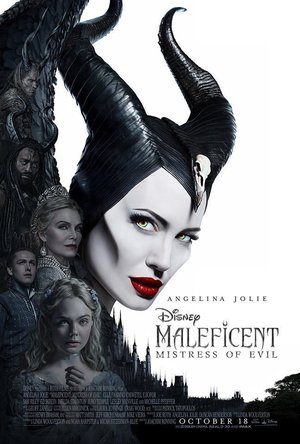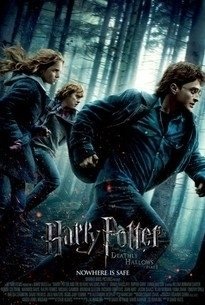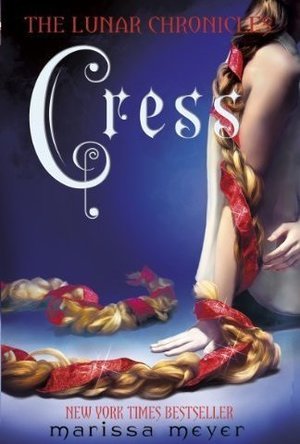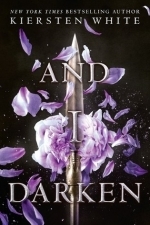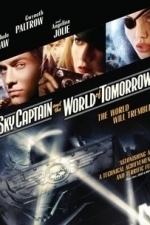
Artemis HD
Photo & Video and Productivity
App
THIS VERSION OF ARTEMIS IS SPECIFICALLY FOR IPAD USERS ONLY. FOR THE UNIVERSAL VERSION OF ARTEMIS...
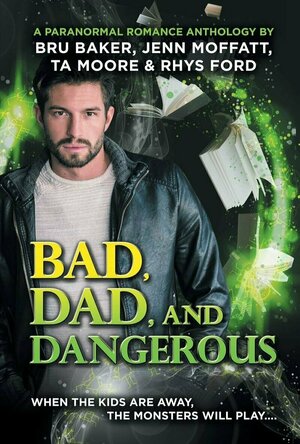
Bad, Dad, And Dangerous Anthology
Rhys Ford, TA Moore, Bru Baker and Jenn Moffatt
Book
Bad, Dad, and Dangerous Anthology When the kids are away, the monsters will play. School’s out...
Paranormal Romance MM MF

Typhoons by Royal Blood
Album
After two UK #1 albums, 2 million album sales and an array of international acclaim, you might’ve...
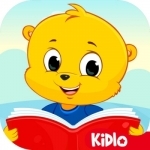
Bedtime Stories For Children
Education and Book
App
**** 180+ New Stories Added **** Story time is learning time with 'Stories For Children: Bedtime...
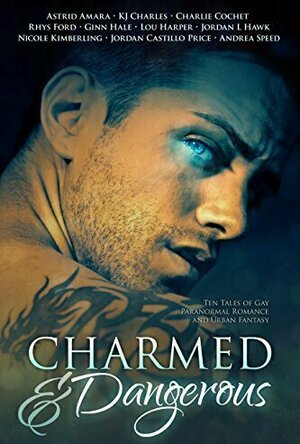
Charmed & Dangerous
Book
Magic takes many forms. From malignant hexes to love charms gone amok, you’ll find a vast array of...
Urban Fantasy Paranormal MM Romance
Charlie Cobra Reviews (1840 KP) rated Maleficent: Mistress of Evil (2019) in Movies
Jul 7, 2020
The beginning started off strong for this movie and it immediately reminded me of what i liked about the first one. Angelina Jolie is just magnificent as Maleficent and you can tell she really enjoys acting the part. I didn't really understand why the people feared her is she wasn't a bad guy (which was the point of the first one I thought, showing the story from her side), but apparently the Queen was spreading rumors or stories to make people frightened. At the dinner scene it was quite believable from Maleficent's outburst that she might have done something to the King but to me it was too out of character that Aurora would believe her to do something like that. Also it was too Deus Ex Machina for another Fey, Connall to have been around close enough for him to save Maleficent when she is shot by an iron bullet. I really liked the scene where they fly around the underground caverns where the other Fey live and show the different biomes and talk about her unkown heritage. It bothered me that the Queen had that little fairy guy that was doing the experiments for her on his own people and how that stuff could kill him too, but what bothered me more was that it never showed his motivations when he released the little creatures in the dungeon. It just showed him do it and never said why or what changed his mind, I feel like there might have been a scene cut there or something. And then there was a couple of ridiculous scenes for me that almost killed this movie for me. One was that all the fairy creatures were invited to the wedding, which was obviously a trap with the red powder already being hinted at, but the fact that the people didn't make as much a deal about it like they did when Maleficent came to dinner surprised me. I mean they had guards holding back the citizens but when Maleficent appeared they ran away, wouldn't they have acted similarly if there were monsters coming to their kingdom. The attack by the Dark Fey on the castle was also one of those parts that made me wonder what the hell was going on. They are massacred on a big scale by the red powder which earlier in the film, it said that it was hard to make or took a long time, but they had butt loads of it in this battle. They had so much that when the Dark Fey retreat and change where they attack the humans even had traps setup in those areas as well. I mean it made for an interesting intense battle scene but Maleficent was the only one of her kind the humans had ever seen and only the Queen's servant said she saw one similar to her save her from the water. How did they know an army was coming and attacking by air. Good planning, smart Queen I guess. I was greatly disappointed that Maleficent didn't turn into a dragon like the cartoon. I love seeing a good dragon on screen but I guess the Phoenix was a good change and fit more with the story especially with her sacrifice. Phoenix's are reborn from their ashes as it says. The last part I found to be laughable was that when the battle is over Aurora is like, "Weddings back on". Her and the Prince are like, we will live in peace from now on with the Moors. Ok, you were just killing each other a couple of minutes ago, and so many Dark Fey died it wasn't even funny. Oh yeah, this movie also did quite a great job of hiding any blood whatsoever in a lot of scenes where there probably should have been some maybe a little. I mean Maleficent gets shot, Connall gets shot up like swiss-cheese, and the soldiers are shooting in the final battle and everyone has weapons like axes, swords, etc.. I really wanted to give this movie a 7 but I have to give it a 6/10.
Movie Metropolis (309 KP) rated Harry Potter and the Deathly Hallows - Part 1 (2010) in Movies
Jun 11, 2019
Deathly Hallows Part 1 is once again helmed by silver screen novice David Yates and after his disastrous attempt at fashioning a movie out of the Half Blood Prince; chills were beginning to set in when his name appeared alongside the huge advertising campaign. However, after 146 magical minutes, those niggling doubts were soon erased.
The Harry Potter series had become somewhat like a trusty old steed, you know it’s going to be there for you when its supposed to, but it no longer fills you with the same excitement it once did. However, I am pleased to announce that a completely new direction of filmmaking, albeit a little late, has revitalised the series.
For any of you out there who haven’t read the book or haven’t kept up with the films thus far, good luck understanding the many twist and turns as the plot throws you from scene to scene in a melee of storylines that are incomprehensible for anyone coming to the series for the first time. This is not to say it becomes a muddled mess, however. Gladly, criticisms are really kept to a bare minimum as Radcliffe, Watson and Grint move away from the once safe haven of Hogwarts and attempt to find the elusive horcruxes that were introduced in the previous film.
Moving the trio completely away from Hogwarts was a dangerous move by J.K Rowling but thankfully David Yates has managed to make it work with references about the films humble beginnings throughout. Unfortunately, this lack of solid ground has meant that many of the saga’s most precious actors and actresses are given very little screen time, allowing the suspense to build up for what is coming next year. Dame Maggie Smith is missing completely and even Alan Rickman, Helena Bonham Carter and Robbie Coltrane rarely have more than few words to say when they are on screen. On the plus side, Imelda Staunton and David Thewlis make a welcome return as Delores Umbridge and Remus Lupin respectively, proving their worth to the series with some great acting.
Ralph Fiennes obviously returning as Dark Lord Voldemort is fantastic and very much welcome after being absent from the 6th film.
Some new additions, including Rhys Ifans portrayal of Xenophilius Lovegood feel a little laboured and whilst being no means a bad actor, Ifans doesn’t fully suit the role and therefore leaves the scenes involving Mr. Lovegood wanting which is a shame because in the book, he became one of the most promising characters.
Praise must go to the special effects team who have been working on this latest instalment of the Potter saga. They are integrated so seamlessly into the film that you hardly even notice they are there; they are literally that perfect and work exceptionally well with David Yates’ fantastic cinematography and stunning scenery which is alongside Prisoner of Azkaban as the best in the series.
The climax is a little disappointing and abrupt but due to the film being 2 parts of 1 book; a natural ending was never on the cards. However, the filmmakers have definitely chosen a spot which will have audiences shouting at the screen in dismay after realising their final Harry Potter fix will not be in cinemas until July next year.
Overall, Harry Potter and the Deathly Hallows Part 1 is by far the most beautifully shot movie of 2010 and has some amazing action pieces coupled with fantastic special effects and mesmerising performances from practically every actor and actress involved who looked like they really wanted to be in their roles. Prisoner of Azkaban still clinches best film in the series so far but fans will certainly not be left wanting with this stunning take on J.K. Rowling’s final book.
https://moviemetropolis.net/2010/11/29/harry-potter-the-deathly-hallows-part-1-2010/
Kyera (8 KP) rated Cress (The Lunar Chronicles, #3) in Books
Jan 31, 2018
Whether I agree or not, many people find that Scarlet is their least favorite book in the series. As a result, I worry that they may not continue with the series at that point which would be a major mistake. Cress is an absolutely fantastic book and will hit you in the feels more times than I can count.
While they may not be my OTP, Cresswell is probably in my top five or 10 favorite ships. I've never really sat down and tried to figure it out. It's like trying to figure out which puppies in an entire room full of puppies are the cutest. Impossible. As much as I love Wolflet and Kaider, there is just that extra something that Cress and Thorne have.
For those familiar with the Disney movie, Tangled, their relationship is very similar (in my opinion). I absolutely adore the two of them together. While Thorne is a bit of a player, confident, a wanted criminal... he goes on this major character arc over the course of the series. Cress has this romanticized, hero view of him and he realizes that he wants to live up to that image.
I laughed so hard when Thorne barreled into the hallway yelling Cress and then ran right past the room. It both tugged at my heartstrings so much and made me roll my eyes. One of my favourite lines was "You came for me" because it just shows the new, unsure feelings between them while simultaneously showing that they're much deeper than either truly realizes yet. My heart melted.
It is fantastic to see how the characters grow and evolve over the course of the series. Kai starts out as a prince and completely unprepared for his responsibilities. He is thrust into his role much sooner than anticipated and he has to grow up really quickly. He has the weight of an entire people on his shoulders.
All Cinder ever wanted was to be a normal person and she finds out that her life is even more abnormal than she realized. Not only is she a cyborg, but she's Lunar. Not only is she a Lunar, but she's royalty. She has just as much if not more on her shoulders than Kai does. She is the one that people have been putting all of their hopes and dreams on for over a decade.
Cress has been stuck in a satellite by herself with no human interaction for a large portion of her life. Her whole life she had to escape into fictional stories in her own head because of her real life. She never learned to stand up for herself and she's not used to the real world. It was nice to see little elements of her bravery throughout the story despite the fact that that is not her nature.
Sadly, we don't really get to see any development from Scarlet or Wolf. Their stories in Cress are relatively non-existent. Despite the fact that they were the focus of the second book, I do think that it was a negative for me that one of the main pairs was essentially completely overlooked in this book. At the same time, I also have that feeling for Winter and Jacin in regards to the first two books and most of the third. We get little glimpses of them and spend a small amount of time with Jacin, but overall I don't feel like I know their characters whatsoever.
The author does continue the world building but the writing is predominantly focused on the characters and the plot. There are some really nice glimpses into small villages or communities in other places than we're used to. I think it is a nice blend between story and world so that these books are very accessible. It's not heavy world building that might make readers hesitant to dive into such rich, dense worlds (like high fantasy might be).
Overall, I think this is a fabulous novel and I would highly recommend the entire series to people even if science-fiction is not normally what you gravitate towards.
Louise (64 KP) rated And I Darken (The Conqueror's Saga #1) in Books
Jul 2, 2018
And I Darken is a new Historical fiction/Re-telling of Vlad the Impaler but gender swapped. Goodreads have it listed as being a fantasy, but there is no magic or any paranormal goings on whatsoever…glad we got that cleared up.
Our story follows Ladislav (Lada) and Radu Dragwyla the descendants of Vlad Dracul, Prince of Wallachia. Vlad is a vile human being and uses his own children for bargaining with the Ottoman Empire, there lives are at risk if he does not keep to the treaties terms. Living in the Ottoman Empire is risky for Lada and Radu, Lada could easily be married off to some suitor for allegiance or killed whichever is easier for the Sultan. Running the grounds they bump into a young boy the same age as them, only to find that he is the Sultan’s son Mehmed. Mehmed is a lonely boy with only his tutors for company so he befriends them both and shares all his education and time with them, which in turn takes them out of the spotlight.
Lada is a very strong character, she is a force to be reckoned with. She is brutal,fierce and just a total badass throughout the book. Being born a woman is one almighty struggle to be taken seriously in the 1400’s. She knows that she is the rightful heir of Wallachia at the young age of 11. She wants to impress her father with her fighting skills and there is a point when she thinks she has, but the only thoughts her father has is marrying her off to a suitor and being a dutiful wife. Lada is very family orientated and has a very unique relationship with her brother Radu but she will never show any emotion as this is a sign of weakness and she is perceived as a cold-hearted bitch.
Radu was always a disappointment to his father, weak,cowardly and clinging to his nursemaids side infuriated Vlad. Radu was the more emotional of siblings, even though he was not great at fighting he had a devious and cunning mind that made him equally as dangerous as Lada.
My feelings towards the characters changed a lot throughout the book at first I thought Lada was just a psychotic child but realised she is trying to prove herself as being fierce. Radu he was very sweet throughout the book and always wanted his sister to just open up and tell him she loved him and for him to tell her his secrets and feelings. The main point is that they are flawed and this is what makes characters great.
Mehmed just annoyed me and he got in the way of Lada’s plans.
The book does contain romance, a love triangle where no one expresses their love for anyone as they are too scared of the consequences or that it will stop them from their goals in life. So the romance is frustrating to say the least.
This book has a lot of political intrigue,so be prepared for wars,treaties,soldiers and their ranks. This is Historical fiction but as in the author’s notes at the end it is not accurate and a lot is made up. Religion is also touched upon, mostly Islam with Christianity but it’s not too in your face or info dumping. The book is nearly 500 pages long! I felt it could have been shorter. I enjoyed the relationship between Radu and Lada,it was a very different set-up from what we are used to. This did take me a little longer to read as in places it was very slow and I found myself getting bored.
This book covers themes such as sibling rivalry, relationships, families, romance, feminism, sexism and politics
<img src="https://images.gr-assets.com/books/1476160834l/22817331.jpg"; width="120" height="180"/>
Now I Rise is the second installment of the And I Darken saga which is due to be released in June 2017 which I will be reading as I am interested in what is going to happen next with Lada.
Overall I rated this 3.5 out of 5 stars
Gareth von Kallenbach (980 KP) rated Sky Captain and the World of Tomorrow (2004) in Movies
Aug 14, 2019
The film stars Gwyneth Paltrow and Jude Law as reporter Polly Prince and Aviator Sky Captain, who are reunited during a surprise attack on New York by an army of robot . Polly has been investigating a recent wake of scientists who have vanished under mysterious circumstances, and when the robots attack, Polly sees a connection and gets in contact with her old flame the Sky Captain.
Sky Captain is not thrilled to see Polly as he does not trust her, especially when they last parted under a difficult situation where the Sky Captain was left in a dangerous situation as a result of Polly’s ambition. Nevertheless, the duo team up and investigate the cause of the attacks. No sooner does the duo start the investigation, then Sky Captain’s base is attacked and his friend and gadget creator Dex (Giovanni Ribisi), has been kidnapped.
In a race against time to save Dex and stop the evil Dr. Totenkoph from destroying the world, Sky Captain and Polly must travel the globe meeting all manner of deadly and bizarre resistance in some of the most remote locations on the planet. Eventually the team meets up with Captain Franky Cook, (Angelina Jolie), who also has a past with Sky Captain, and her legion of flying forces help stage an attack on the good doctors compound in a lavish display of FX and action as they attempt to gain entry to a hidden fortress.
With the clock ticking, and the situation growing tense, Sky Captain and his crew must traverse the exotic and deadly location of the hidden location before it is to late if they are to stop the doctor and his henchmen (Bai Ling), and save Dex, the missing scientists, and the world.
While ambitious “Sky Captain” suffers from a lack of focus as the film tries to do too much. Writer/Director Kerry Conran does a good job in his first feature, as he is able to blend lavish visuals in a unique and creative way to create and populate the world of the film. Sadly though, the performances of Paltrow and Law are remarkably understated and the talented cast often comes across as bland. This causes the audience to have little connection with the characters and any real tension or chemistry is sadly lacking. We know there was some history between the two lead characters but it is mostly glossed over in favor of the action that after a while comes across as more of the same and becomes bland. Only the Franky character stands out as Jollie plays her with a sultry charm and flair that hides her devilish streak, yet emphasizes the strength of her character and her loyalty to the captain.
I had really wanted to like this film, as I found the premise to be interesting, however the action sequences were rather under whelming and to me it was very obvious that the film was filmed entirely against screens and used CGI for everything from buildings to sets. While ambitious, it became overwhelming after a while and in more than one instance the backgrounds were obviously false and did not match up well with the actors.
While this can be excused, what cant be a pedestrian plot that borrows heavily from other works, and while they like this film were inspired by the serials of old, and pulp comics, I could not help but see the “Indiana Jones”, “Star Wars”, and “Jurassic Park”, over and over in the film. Law, Jolie and Paltrow are talented actors but they are given little to do aside from run around and spout stale dialogue from a story that is already muddled down by a lackluster plot, lack of tension, pacing, and average special effects.
Conran is a director with promise and it should be noted that despite the film’s faults, the film was a daunting task as it was shot in just 29 days, which would strain even the most seasoned of directors. As it stands “Sky Captain” is an average film that could have been much better with just a little more time in the hangar.
